Search
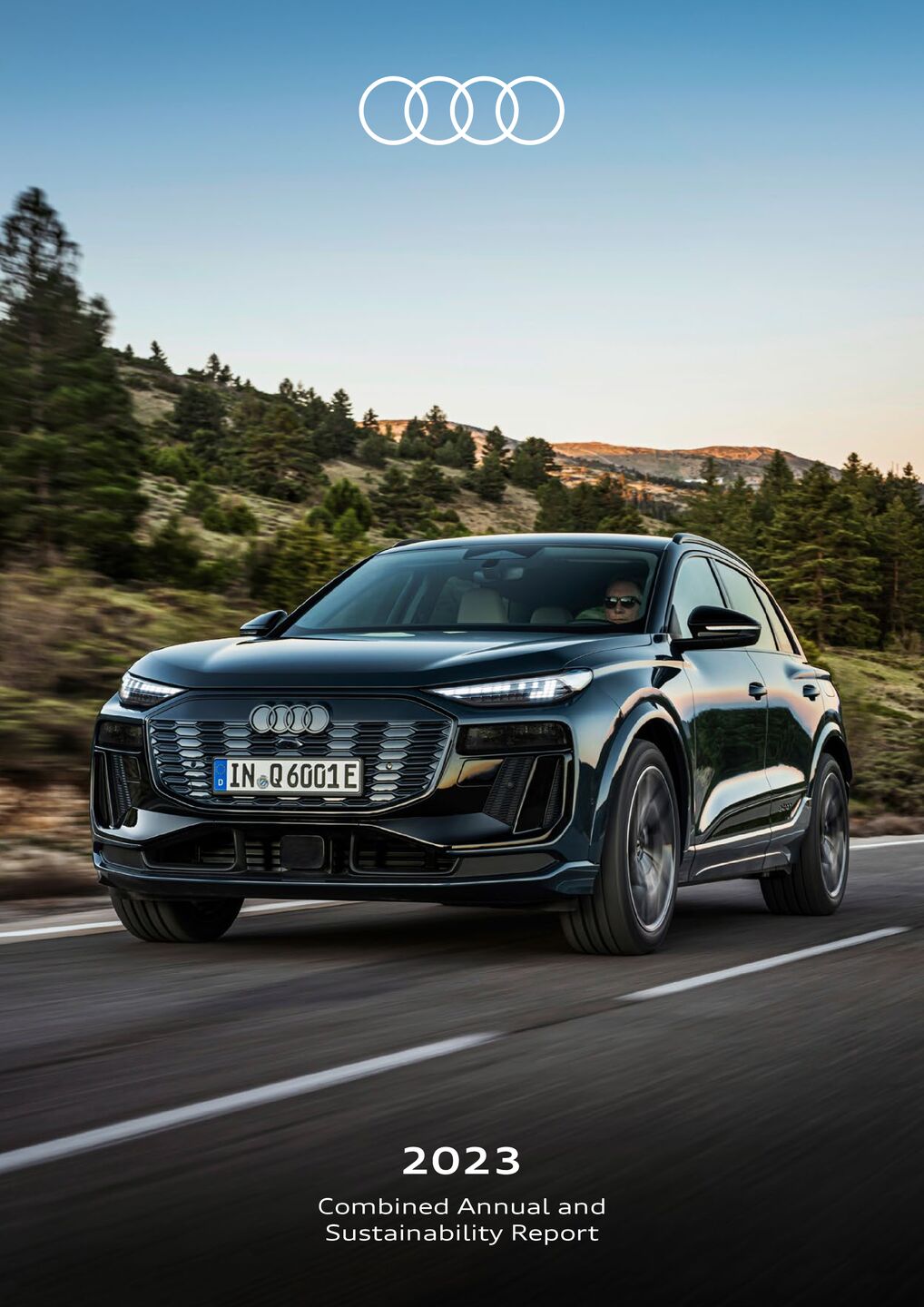 2023: Combined Annual and Sustainability Report
2023: Combined Annual and Sustainability Report
Q6 Roadjet E 6,341 Aurangabad, India ŠKODA AUTO Volkswagen India Private Limited A4 Sedan A6 Sedan Q3 Q3 Sportback Q5 Q7 H 7,646 Amphur Pluakdaeng, Thailand Ducati Motor (Thailand) Co., Ltd. DesertX, Diavel, Hypermotard, Monster, Multistrada, Panigale (Superbike), Scrambler, Streetfighter, SuperSport G Key Vehicles produced in 2023 150,001 to 480,000 50,001 to 150,000 10,001 to 50,000 0 to 10,000 Strategy & Company Finance ESG Appendix 8 Audi Report 2023 A B C D Ill us tr at io n: C 3 V is ua l L ab 5 Production of semi-knocked-down (SKD) vehicles. With this procedure, the cars are completely assembled to start with. Then they are partially dismantled and transported as kits to São José dos Pinhais. Assembly is carried out in accordance with the technical and quality specifications of AUDI AG. 6 Production of completely knocked-down (CKD) vehicles. In this process, the motorcycles are disassembled into parts kits in their country of origin, Italy, and then assembled in Córdoba after being transported to Argentina. North and South America 176,990 Cars produced: 1,959 Motorcycles produced: 1,337 Manaus, Brazil DUCATI DAFRA da Amazônia Indústria e Comércio de Motocicletas Ltda. DesertX, Diavel, Monster, Multistrada, Panigale (Superbike), Scrambler, Streetfighter B 1,3645 São José dos Pinhais, Brazil Audi do Brasil Indústria e Comércio de Veículos Ltda. Q3 Q3 Sportback C 6226 Córdoba, Argentinia Volkswagen Argentina S.A. Multistrada Scrambler D 175,626 San José Chiapa, Mexico Audi México S.A. de C.V. Q5, SQ5 Q5 Sportback, SQ5 Sportback A Key Vehicles produced in 2023 150,001 to 480,000 50,001 to 150,000 10,001 to 50,000 0 to 10,000 Strategy & Company Finance ESG Appendix Audi ups the pace A new activation and implementation program is allowing Audi to tackle important issues in order to achieve long-term success. The Audi Agenda centers on products, technologies, the brand and the regions of China and North America.
 Audi Tradition - Anniversary Dates 2024
Audi Tradition - Anniversary Dates 2024
The merger of NSU and Auto Union to create Audi NSU Auto Union AG sparked rumours that the K 70 would not be built as a product to rival the Audi 100 and VW 411/412. But this did not happen and VW adopted the last new car to be developed in Neckarsulm, getting it ready for production with help from former NSU engineers at the newly constructed plant in Salzgitter within a year. From August 1970 to May 1975, 211,127 VW K 70 rolled off the production line in Lower Saxony. Audi Tradition 18 Anniversary Dates 2024 Takeover of Auto Union GmbH by Volkswagenwerk AG Years 60 1964 was a key turning point for Auto Union in Ingolstadt. In an extraordinary meeting of the shareholders on 16 December 1964, those present decided to increase the share capital from 80 to 160 million DM. At the same time, the acquisition of 51% of the capital by Volkswagenwerk AG, which had been prepared back in October of the same year, received the required approval. The officials thus initiated the gradual takeover of Auto Union GmbH from Daimler-Benz AG (previously the sole shareholder) by Volkswagenwerk AG. The takeover became legally effective on 1 January 1965. The rest of the shares were acquired from Daimler-Benz in further stages. From 1 November 1966, Auto Union GmbH was a fully owned subsidiary of VW. Audi Tradition 19 Anniversary Dates 2024 DKW F 102 The long-awaited successor to the outdated Auto Union 1000 made its debut at the International Motor Show in Frankfurt in September 1963, but only hit the market in March 1964. Hailed as the “Formula of Progress”, the DKW F 102 was a car with a modern design that was noted for its self-supporting body which was a departure from the separate design of chassis and body that had previously been customary at the company. But the grand DKW was still fitted with a three-cylinder, two-stroke engine. It was set to be the final two-stroke passenger car in the company’s history; the last DKW F 102 rolled off the production line in March 1966.
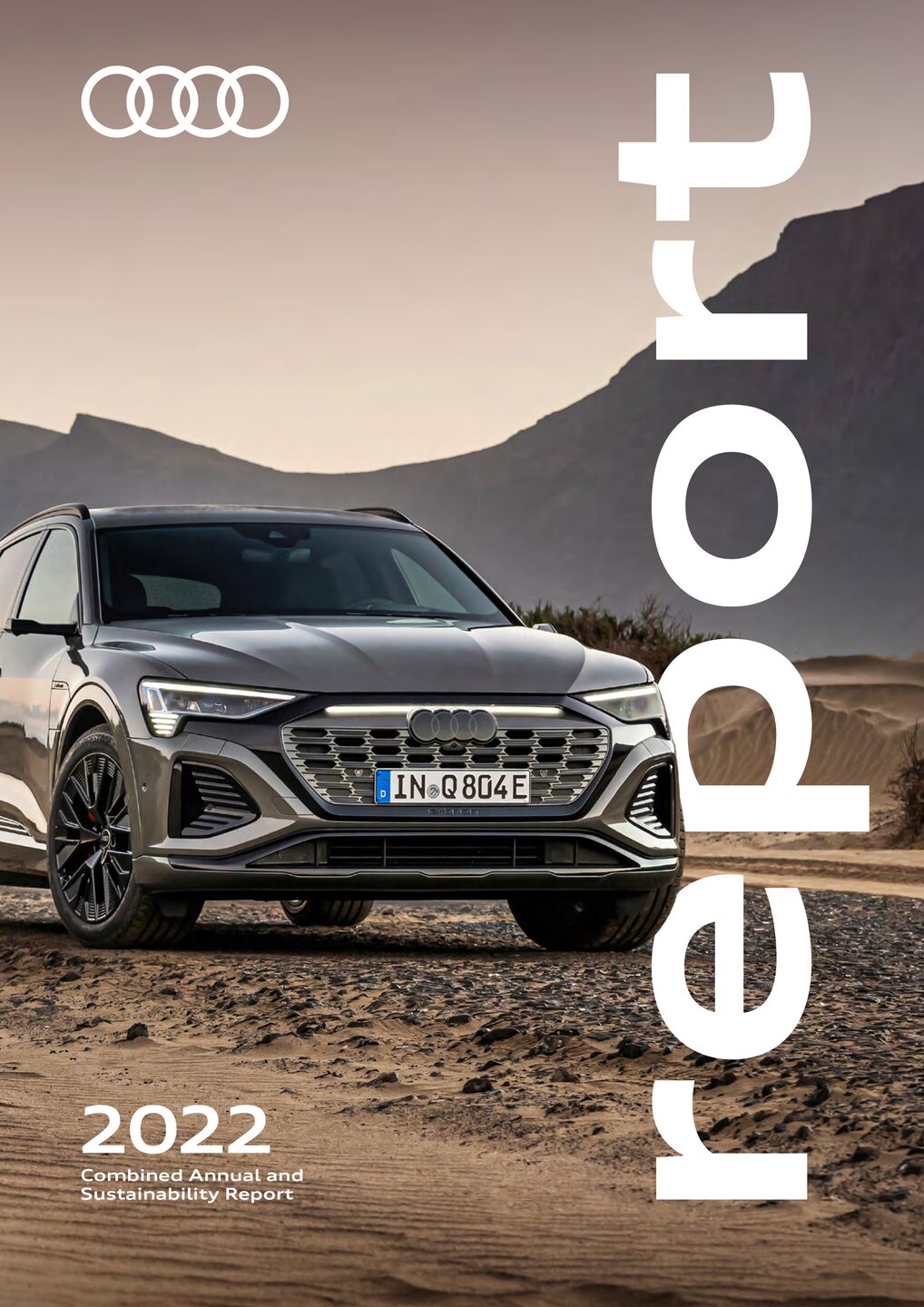 Audi Report 2022
Audi Report 2022
Key Vehicles produced in 2022 150,001 to 420,000 50,001 to 150,000 10,001 to 50,000 0 to 10,000 Győr, Hungary Audi Hungaria Zrt. 170,018 vehicles Q3, RS Q3 Q3 Sportback, RS Q3 Sportback TT Coupé, TTS Coupé, TT RS Coupé TT Roadster, TTS Roadster, TT RS Roadster 8 Sant’Agata Bolognese, Italy Automobili Lamborghini S.p.A. 9,925 vehicles Aventador Coupé, Aventador Roadster Huracán Coupé, Huracán Spyder Urus 9 Bologna, Italy Ducati Motor Holding S.p.A. 57,380 vehicles DesertX, Diavel, Hypermotard, Monster, Multistrada, Panigale (Superbike), Scrambler, Streetfighter, SuperSport 10 Martorell, Spain SEAT, S.A. 58,826 vehicles A1 allstreet, A1 Sportback RS 3 Sedan 11 7 8 6 5 4 2 1 3 6 Audi Report 2022 Products & Services Value Creation & Production Operations & Integrity Strategy Employees & Society Introduction Appendix Ill us tr at io n: C 3 V is ua l L ab Foshan, China FAW-Volkswagen Automotive Co., Ltd. 37,912 vehicles Q2 L, Q2 L e-tron Q4 e-tron 6 Tianjin, China FAW-Volkswagen Automotive Co., Ltd. 77,022 vehicles Q3, Q3 Sportback 2 Changchun, China FAW-Volkswagen Automotive Co., Ltd. 409,930 vehicles A4 L Sedan, A6 L Sedan e-tron Q5 L, Q5 L Sportback 1 Qingdao, China FAW-Volkswagen Automotive Co., Ltd. 69,785 vehicles A3 L Sedan A3 Sportback 3 Ningbo, China SAIC Volkswagen Automotive Co., Ltd. 2,042 vehicles Q6 Roadjet 5 Anting, China SAIC Volkswagen Automotive Co., Ltd. 9,561 vehicles A7 L Sedan Q5 Roadjet e-tron 4 Amphur Pluakdaeng, Thailand Ducati Motor (Thailand) Co., Ltd. 11,503 vehicles DesertX, Diavel, Hypermotard, Monster, Multistrada, Panigale (Superbike), Scrambler, Streetfighter, SuperSport 7 Aurangabad, India ŠKODA AUTO Volkswagen India Private Limited 3,690 vehicles A4 Sedan A6 Sedan Q5 Q7 8 Asia Changchun, China (FAW-Volkswagen) Tianjin, China (FAW-Volkswagen) Qingdao, China (FAW-Volkswagen) Anting, China (SAIC Volkswagen) Ningbo, China (SAIC Volkswagen) Foshan, China (FAW-Volkswagen) Aurangabad, India (ŠKODA AUTO Volkswagen) Amphur Pluakdaeng, Thailand (Ducati
 Anniversary Dates 2023
Anniversary Dates 2023
Heydekampf ................12 Autumn 1978 45 years Audi five-cylinder diesel engines ..............13 July 1973 50 years end of production of NSU Prinz 4 .............14 March 1973 50 years death of Fritz von Falkenhayn ..................15 December 1968 55 years end of production of DKW Munga, very last DKW ......................................................16 October 1963 60 years Ludwig Kraus joins Auto Union GmbH .......17 September 1963 60 years new products presented at Frankfurt IMS – NSU/Wankel Spider..............................................18 Contents Anniversaries in Our Corporate History Audi Tradition 3 Anniversary Dates 2023 September 1963 60 years new products presented at Frankfurt IMS – DKW F 12 und DKW F 12 Roadster ........................20 September 1963 60 years new products presented at Frankfurt IMS – DKW F 102 ..........................................................22 September 1963 60 years end of production of Auto Union 1000 .....23 May 1963 60 years bike production ceased in Neckarsulm ......24 April 1958 65 years takeover by Daimler-Benz, new plant, end of motorbike construction ..............................25 March 1953 70 years DKW F 91 three-cylinder model ...............27 October 1953 70 years NSU Quickly ............................................28 August 1948 75 years deletion of Auto Union AG .......................29 Spring 1933 90 years Audi Front ..............................................30 1928 95 years NSU 6/30 and NSU 7/34 .........................31 1873 150 years foundation of NSU ................................32 Audi Tradition 4 Anniversary Dates 2023 1988 35 years Audi 200 TransAm ..................................33 1983 40 years Hannu Mikkola, World Rally Champion .....34 1978 45 years Audi Motorsport .....................................35 June 1938 85 years Ewald Kluge wins the Lightweight TT on DKW ........................................36 January 1938 85 years Bernd Rosemeyer suffers fatal accident
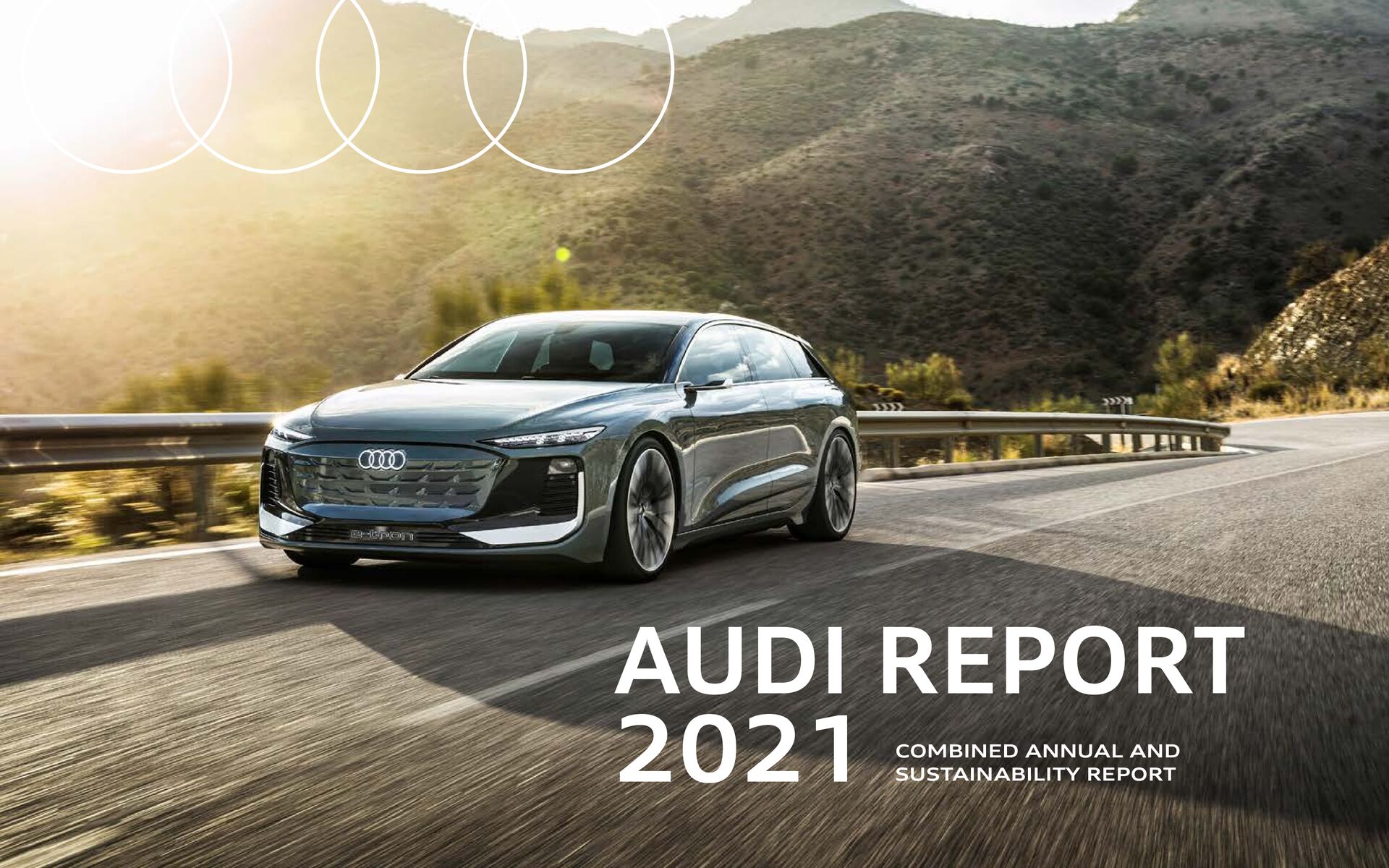 Audi Report 2021
Audi Report 2021
The basis for determining and selecting stakeholders is the Stakeholder Engagement Standard Accountability 1000 (AA1000SES) and its associated principles of inclusivity, materiality and responsiveness. GRI 102-40, 102-42, 102-43, 102-44, 102-46, 102-47 2,200 stakeholders took part in the survey https://www.audi.com/en/company/sustainability/stakeholder-management.html S trateg y P ro d u cts & S ervices O p eratio n s & In teg rity V alu e C reatio n & P ro d u ctio n E m p lo yees & S o ciety A p p en d ix In tro d u ctio n Strategy Future viability, leadership and responsibility for the transformation of Audi: the Board of Management team in interview. How Audi is shaping progress for the future: the five fields of the “Vorsprung 2030” strategy. From Audi for Audi – more than 500 employees were involved in developing the strategy. Audi is accelerating its transformation: The company has a clear plan of what role it wants to play for the mobility of the future. Audi is developing meaningful technology to keep the world in motion. The backbone of this is the new corporate strategy “Vorsprung 2030” – this ensures the future viability of Audi and focuses on profitable growth and differentiation for products and services. In this chapter you will find out about the core contents of the strategy, how it came about and what role the individual divisions play in implementing it. Navigation display of the Audi grandsphere concept:¹ Instead of using displays, information is projected onto the wood surfaces in the interior. P h o to : A U D I A G 24 19 21 ¹ The vehicle mentioned and shown here is a concept vehicle that is not available as a series-production vehicle. Audi Report 2021 18 Audi already has net carbon-neutral¹ operations for the production of its vehicles at several sites. Now the company is focusing even more strongly on sustainability throughout the entire product life cycle – from resource extraction and vehicle operation to recycling of the materials used.
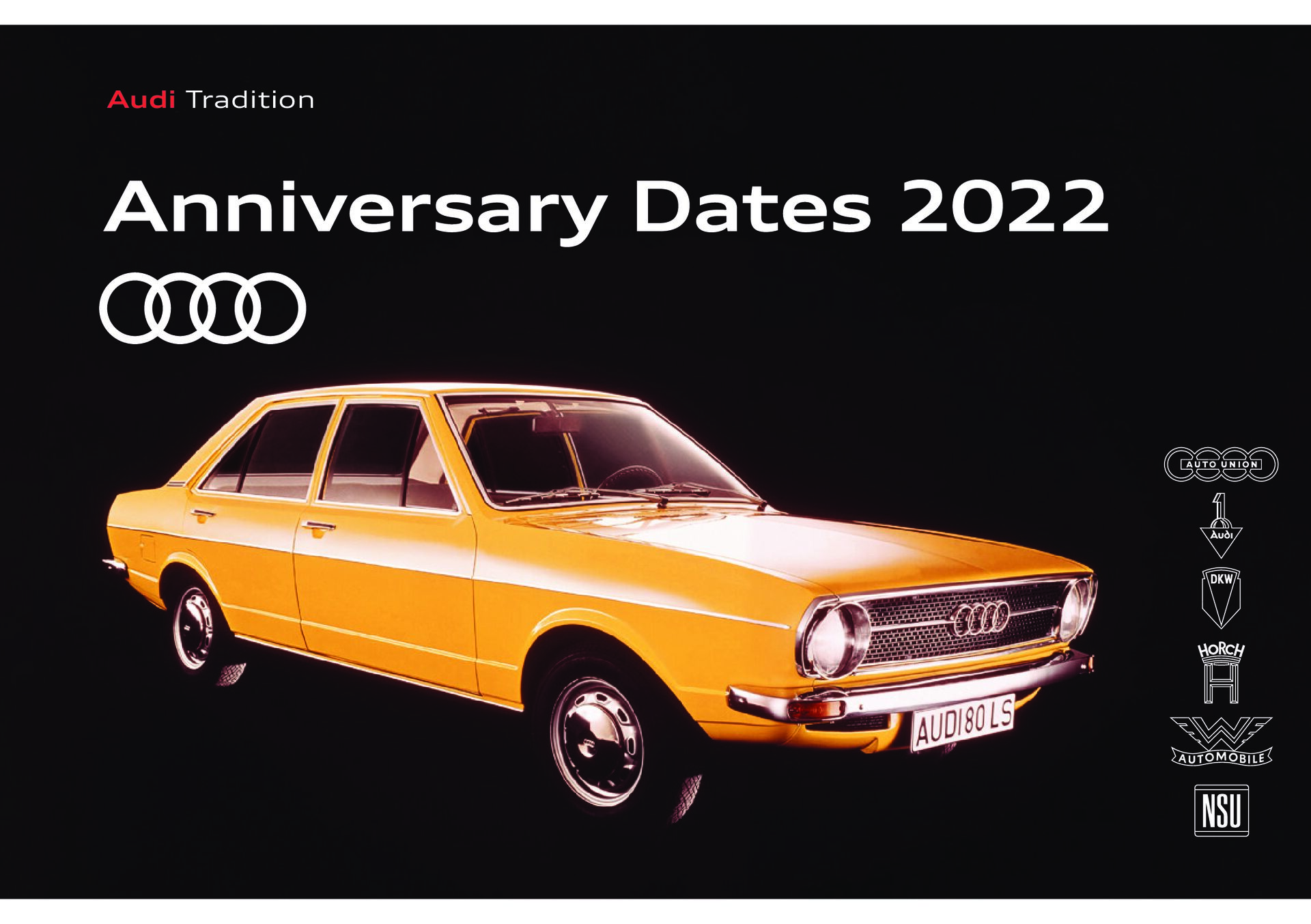 Anniversary Dates 2022
Anniversary Dates 2022
As part of a plan to modernise the products at the then subsidiary Auto Union GmbH, Kraus was posted to Ingolstadt where from 1 October 1963 he was the director in charge of vehicle development. After Auto Union GmbH was acquired by Volkswagenwerk AG in December 1964, Ludwig Kraus joined the management team of the Ingolstadt-based company in 1965. His biggest achievement was developing a modern range of Audi vehicles which were launched as the successors to the DKW models with two-stroke engines from the end of 1965. The Audi 60/Super 90, Audi 100, Audi 80 and Audi 50 model series which he created blazed the trail for the company's further development. Following the merger with NSU Werke AG to create Audi NSU Auto Union AG, from 1 September 1969 Kraus was appointed as the board member with responsibility for technical development. Ludwig Kraus retired on 31 December 1973. Between 1976 and 1985 he was a member of the Supervisory Board of Audi NSU Auto Union AG. Ludwig Kraus died on 19 September 1997. 25th anniversary of death of Ludwig Kraus25 years Audi Tradition 8 Anniversary Dates 2022 First Audi Avant in the B-series 30 The Avant version, which was introduced with the second-generation Audi 100, gets its name from the Italian word “avanti”, which means “forwards”. The first Avant model in the lower mid-range class was launched on the market in September 1992 with the Audi 80 Avant (B4 series). The new model was available with nine different engines ranging in power from 90 to 315 hp and became a best-seller. With the 80 Avant, Audi succeeded in making a strong entry into the lifestyle estate car market segment.
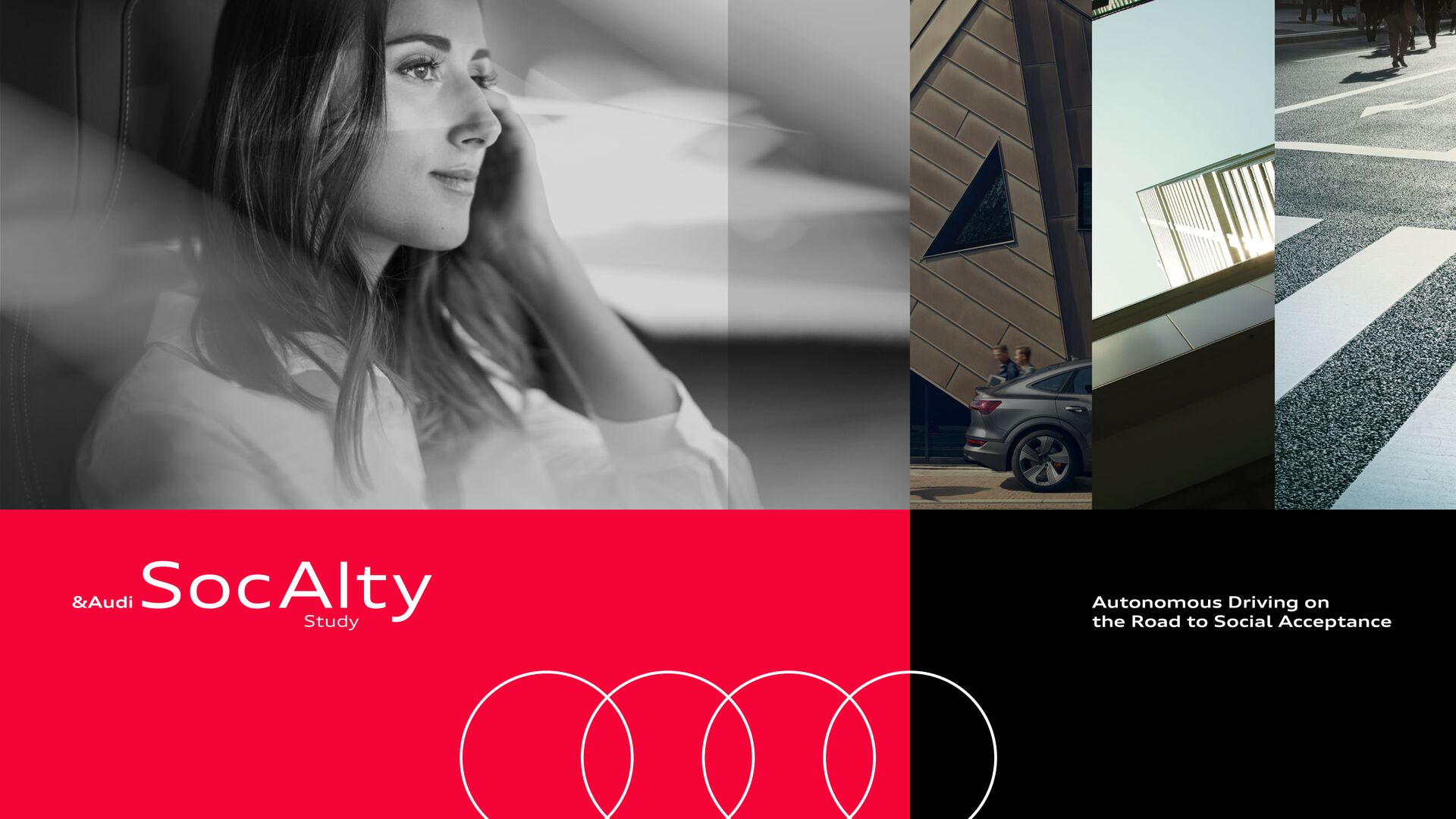 &Audi SocAIty study
&Audi SocAIty study
Genevieve Bell Director of the School of Cybernetics & Florence Violet McKenzie Chair, The Australian National University Senior Fellow – New Technology Group, Intel Corporation Jake Fisher Senior Director – Auto Testing, Consumer Reports Dipl.-Ing. Torsten Gollewski Executive Vice President – Autonomous Mobility Systems, ZF Group & CEO, Zukunft Ventures GmbH Dr. Tobias Miethaner Ministerial Director – “Digital Society” Directorate-General, German Federal Ministry of Transport & Digital Infrastructure (BMVI) Alexander Pesch Senior Director – ADAS / Automated Driving / ICV, Audi China Law Ethics Data 1 Methodology & Background 9 2 Foresight 2030 10 What will our transport and mobility landscape look like in 2030? This is the burning question for many experts, mobility users and companies alike. Will all cars be self-driving? Will passenger and delivery drones crowd our skies? What will this mean for our cities or for rural regions? Such questions surrounding potential future scenarios are currently at the heart of a highly controversial conversation – depending on your point of view, utopian or dystopian ideas set the tone of the debate. Overall, the World of Mobility is Diversifying Over the course of the interviews, all of our experts were asked about their vision of the year 2030, with a surprisingly unanimous result. The prevailing opinion was that the mobility landscape in 2030 will almost certainly be both more fragmented and more complex than it is today. According to the experts, this is primarily a result of the fact that we find ourselves in a transitional phase in which new mobility options are becoming increasingly established across all areas. This will, the experts believe, lead to a fragmentation of the market as a whole, at least temporarily. Nevertheless, the existing infrastructure will by and large prevail.
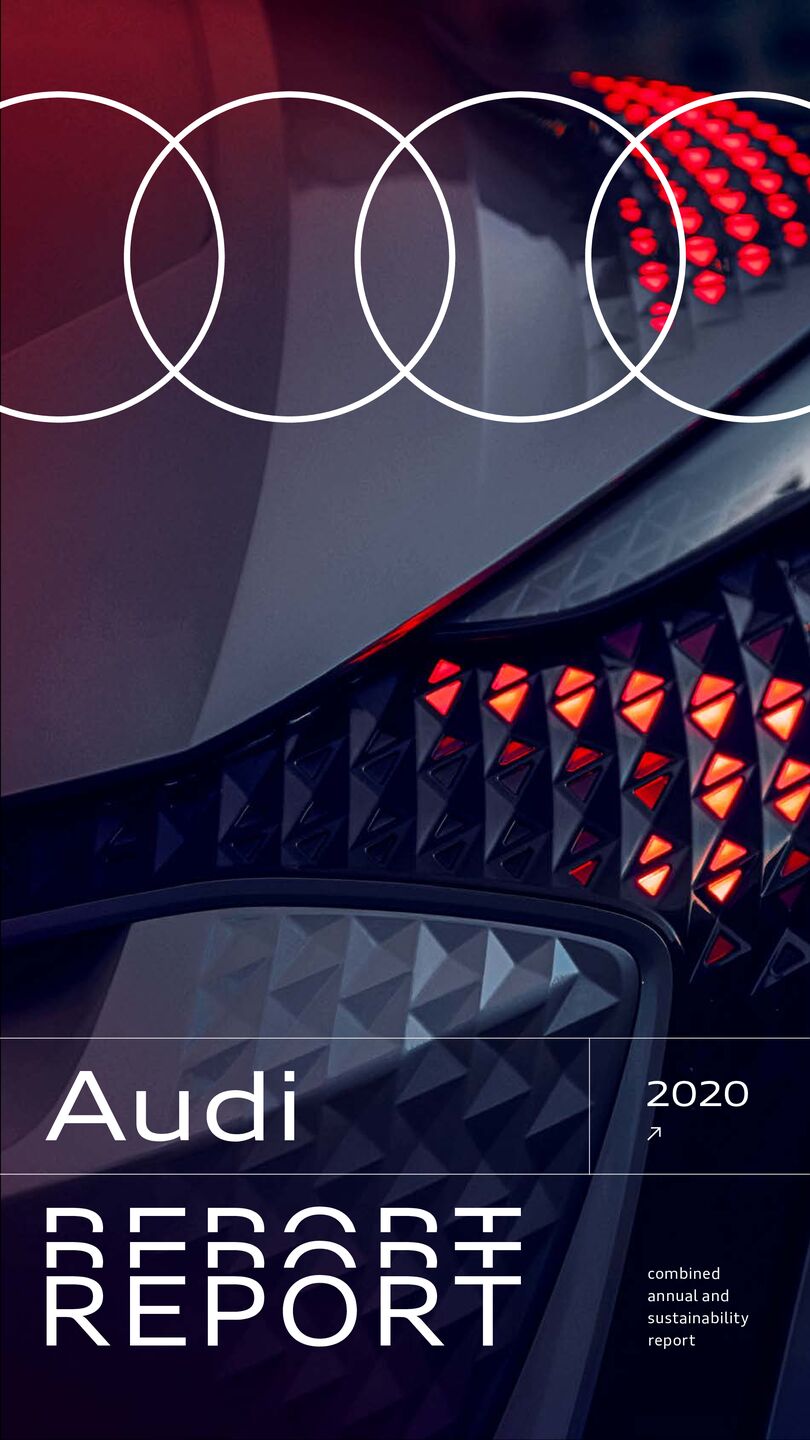 Audi Report 2020
Audi Report 2020
The basis for determining and selecting stakeholders is the Stakeholder Engagement Standard AccountAbility 1000 (AA1000SES) and its associated principles of inclusivity, materiality and responsiveness. GRI 102-40, 102-42, 102-43, 102-44, 102-45, 102-46, 102-47, 102-48, 102–49 Querverweis_0-3_UeberBericht 7About the ReportAudi Report 2020 (stakeholder relevance). This enabled the company to identify all the topics that are highly relevant for Audi and its stakeholders and that have a substantial impact on the environment and society.2 The findings of this materiality analysis provide a structure for this report. Topic matrix The topic matrix featured in the Sustainability Report 2019 serves as the basis for the combined annual and sustainability report and was further developed by incorporating content from corporate and financial reporting. This process resulted in an extension, what is known as the Content Wheel see page 315, which highlights the material topics in five chapters – “Strategy,” “ Operations & Integrity,” “Products & Services,” “Value Creation & Production” and “Employees & Society.” In addition, as was the case with the Sustainability Report 2019, the Content Wheel ensures that all those involved constantly have their sights set on corporate strategies, reporting standards of the Global Reporting Initiative (GRI) and the United Nations Sustainable Development Goals (SDGs) when it comes to the topic of sustainability. Standards and auditing The report was prepared in accordance with the “core” option of the GRI standards and confirmed by the organization with the GRI Materiality Disclosures Service. An independent auditing firm performed a limited assurance engagement on selected sustainability key figures for 2020 in the overview “Audi Sustainability Key Figures” see page 323. The Audi Report is only available to readers online.